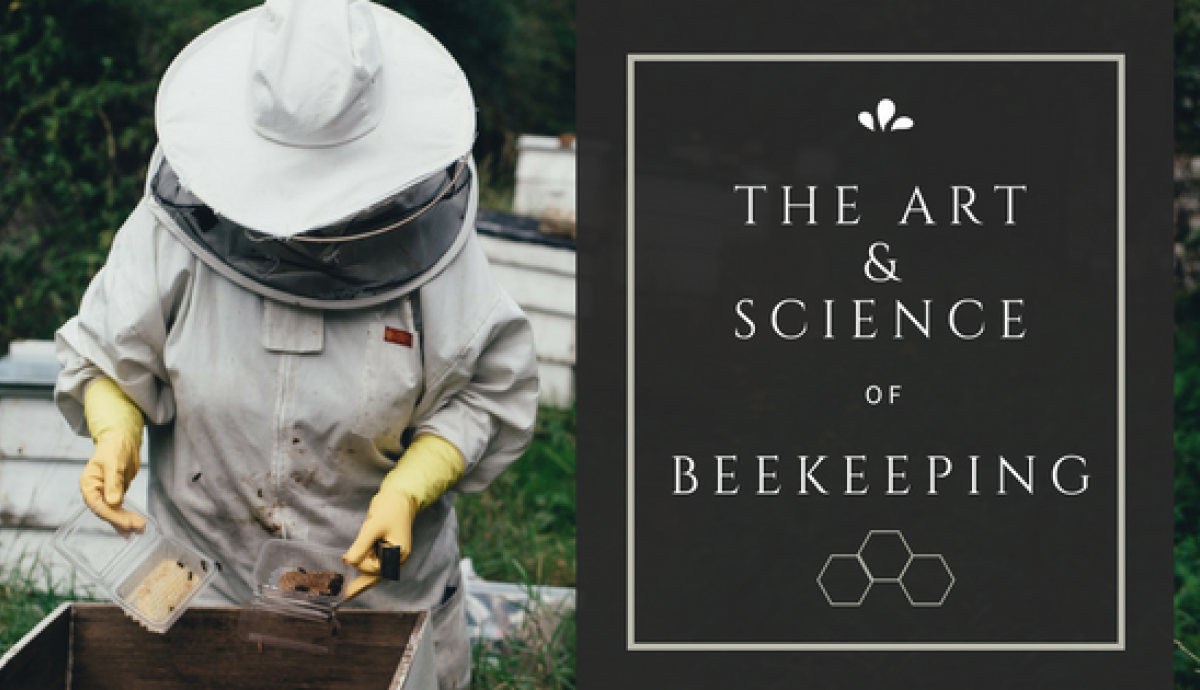The Art & Science of Beekeeping
In the spirit of National Honey Month, we bring you a history of beekeeping as an ancient art and an overview of apiology as an important science for modern life.

Beekeeping, also known as Apiology, has served as an important art and science throughout human history. In our last article, the first in our “National Honey Month” series, we learned the world’s oldest honey dates all the way back to the 35th century BC. Beekeeping has been around for centuries, and the earliest written references to it can be found within Ancient Greek myths and legends.
In modern life, beekeeping continues to fascinate many across the United States. As a form of agriculture, it serves as a source for food, medicine, and provides us with other commodities while bringing income to the most devoted.
Beekeeping: An Art
In Ancient Greece, Beekeeping was considered an “agricultural art” by the Athenians along with olive growing and cheese making. In Greek mythology, Aristaeus, a “minor Greek deity of various rustic pursuits” traveled the region teaching such arts to the local people (Eva Crane, The World History of Beekeeping and Honey Hunting).
.png)
Aristotle, an ancient philosopher, also wrote a great deal about the life and activities of bees in his book Historia Animalium. Other Greeks continued to write about beekeeping for years, including Theophrastus (372-288 BC) who is believed to have written 227 related works, and Aristomachus of Soli, a man who “devoted himself to nothing else for 58 years” (Eva Crane, The World History of Beekeeping and Honey Hunting).
Beekeeping is an art that is often passed down in families from one generation to the next. It’s artistic in the sense that science alone will not guarantee a successful beekeeper.
Experience, anticipation, and an understanding of various external factors outside one’s control are required and just as important as knowledge of bee science, botany, and modern agriculture. The art of successfully caring for bees is in understanding this balance and applying what you know to each unique hive and environment.
Fun Fact
The Ancient Greeks were not the only people fascinated by beekeeping. In fact, many well-known characters and individuals have been interested in apiology, including Sir Edmund Hillary (1919-2008) and Sherlock Holmes.
Known as the first man to scale Mt. Everest and to drive a tractor across Antarctica, Sir Edmund Hillary is considered one of the 20th century's greatests adventurers. He also was an experienced beekeeper, a trade passed down to him from his father.
Even Sir Arthur Conan-Doyle’s most famous fictional character had an interest in apiology. Mr. Holmes took up beekeeping in his retirement in the book “His Last Bow – An Epilogue Of Sherlock Holmes".
Beekeeping: A Science
Keeping honey bees for honey production is more than a hobby or a career, it’s an important part of the agricultural industry and the benefits of beekeeping go beyond honey’s culinary delights. Bees are an important component of a healthy environment and help farmers pollinate their crops. They also produce other commodities as well, including beeswax, propolis, pollen pellets, royal jelly, and bee venom. While royal jelly is often sold to other beekeepers to help produce more queen bees, the other products listed above have many uses outside of the bee-realm.
_1.png)
For example, honey, beeswax, propolis, and bee venom have all been used by medical professionals. Honey has been used to treat allergies, digestive problems, and even wounds (Traditional and Modern Uses of Natural Honey in Human Diseases: A Review). Today it is often found in cough drops, along with propolis or “bee glue”, to treat coughs and sore throats. Beeswax is a common ingredient in pills, creams, and salves and is even a main ingredient in surgical bone wax. Lastly, bee venom has been used to treat arthritis and provide pain relief to those who are not allergic to it due to its anti-inflammatory properties.
Fun Fact
The use of beeswax can be traced all the way back to ancient times in Egypt and Persia (Stefan Bogdanov, Beeswax: History, Uses and Trade). Beeswax was used for many things, including:
- Mummification - Beeswax was used while embalming the dead and throughout the mummification process. The word "mummy" is actually related to the Persian word "mūm" meaning wax!
- Business & The Arts - A mixture of beeswax and powdered pigments were often used as ink to write official documents and as paint for art. It was also used for document sealing and preservation.
- Candles & Figures - Beeswax is, indeed, a wax and was used in candle and figure-making.
_1.png)
Interested in joining the ranks of Sir Edmund Hillary and Sherlock Holmes?
- Check out this America's Heartland video to see how one Chef in Chicago did just that -- 47 floors up!
- Young aspiring urban beekeepers can also read The Honeybee Man by Lela Nargi, a beautifully written story offering an inside look at the life of an endearing beekeeper and the honey-making process.
- Beekeepers by Linda Oatman High approaches beekeeping as an art through a beautifully crafted story about a girl, her grandfather and the passing of a legacy to be a beekeeper.
- For a more scientific perspective on beekeeping, Hooray For Beekeeping! by Bibbie Kalman provides a nice overview of honey bees and beekeeping and What if There Were No Bees? by Suzanne Slade does a great job illustrating the importance of bees.
For additional bee-related recommended resources, check out our Recommended Publications page and visit the topic "Entomology & Food From Insects"!
Part 2 of 3 Part "National Honey Month" Series.









